


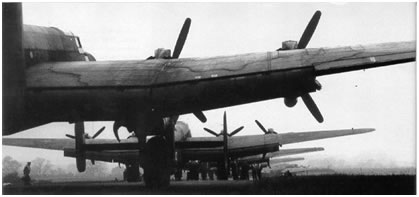

During the Second Wold War many volunteers from the Commonwealth and European countries joined Britain in the defense of the country and the struggle to defeat Nazi Germany. Many of them lost their lives in doing so and this is the story of a Canadian crew and their last operations 75 years ago.
It is Saturday 14 October 1944, 06:30hrs, at RAF Croft in North Yorkshire. Handley Page Halifax BV NP144, takes of for a raid over Germany, target the port of Duisburg in the Ruhr area, the industrial heartland of Germany. It is part of a larger group of Halifax bombers belonging to 434 Squadron RCAF, known as the Bluenose Squadron. The crew consists of:
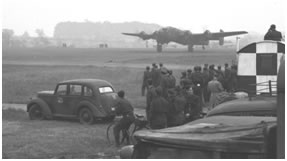
The aircraft carries a load of seven 1,000lb and six 500lb bombs. The mission is uneventful, the target area was hit and the aircraft and its crew returns to Croft at 11:43hrs and following the normal debrief it is time for lunch and rest.
Fast forward to later that day to 22:20hrs. Handley Page Halifax BIII MZ920 WL-C takes off from RAF Croft, target Duisburg as part of a larger Allied bomber stream assembling over the South East Midlands. On board is the same crew that flew the morning mission in Halifax NP144. They are headed for Northamptonshire where they will join up with the other bombers and escorting fighter aircraft taking part in the raid. The bomb load for this mission is identical to that for the morning mission.
Flying at 20,000ft over the border of Nottinghamshire and Leicestershire border the starboard outer engine catches fire and despite the pilot attempt to extinguish the fire it rages on. It is obvious that the pilot has to abort the mission and land somewhere for the crew to escape. The RAF and USAAF airfields in the area are launching their bombers and do not want a burning aircraft to block their runways. The aircraft is diverted to RAF Church Lawford south west of Rugby Warwickshire.

Now the lubricating oil is escaping and is being ignited by the fire as is the boosted mixture. The starboard inner engine is now burning also and the integrity of the wing is threatened. And the cockpit is filling up with smoke. The fire is taking hold along the length of the starboard wing. The Halifax is approaching the airfield at Church Lawford, but has to fly over Dunchurch first in order to reach safety. The situation is so bad that two of the crew members, F/O Sterling, the bomb aimer and F/Sgt Stamatis, the wireless operator decide to open the escape hatch and bail out. Stamatis lands safely and is uninjured, Sterling, however, lands on electric light cabling and shorts out all the village lights, getting injured in the process.
Back in the aircraft, F/L Wood makes a final attempt to extinguish the fire by diving, but the starboard wing breaks of and the aerodynamic load on the port wing causes it to break off too. Despite desperate attempts to open the escape hatch, it appears jammed, the five remaining crew members lose their lives as the remains of the aircraft fall to earth. It is 23.50 The map shows a red cross where the aircraft came down near Dunchurch Railway Station alongside the A45 road to Coventry, which was closed because of the unexploded bombs. Is was reopened at 15:45hrs on Friday 27th off October, almost two weeks after the crash.
The Canadian crew members were taken to Chester’s Blacon cemetery where they were laid to rest. Sgt Grant’s remains were taken to his hometown in Wales where he was laid to rest.
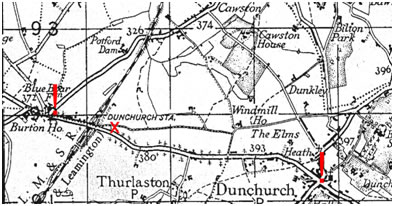
The first thing that caught David's eye was the 1940 something postmark and be the inquisitive type he thought it might have been written during the war years and wondered what might have been going on in the village at that time. Image his surprise when he read the back of the post card. David spent many hours contacting various organisations to find out about the aircraft and its crew. The Nation Records Office in Kew, 434 Squadron RCAF, the RAF and several others. Ultimately, he found all the facts about the aircraft's history, the mission and the crew members. With all the information available David George, the then Chairman of the Rugby Aviation Group, together with a fellow member of the group, Roger Higgerson, decided to look into the possibility of creating a memorial in memory of the crew and with a few other people to help them, found an appropriate granite rock, had the plaque created and found a suitable place to site what is amongst the members of the Rugby Aviation Group today commonly referred to as the Halifax Memorial.
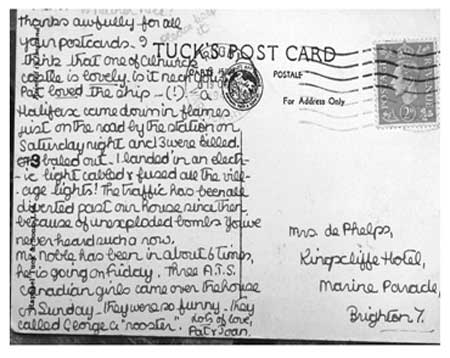
Every year on Remembrance Sunday, the memorial is at the centre of a simple wreath laying ceremony by the chairman of the Rugby Aviation Group in the presence of both David George and Roger Higgerson, the latter tending to the memorial on a frequent basis throughout the year.
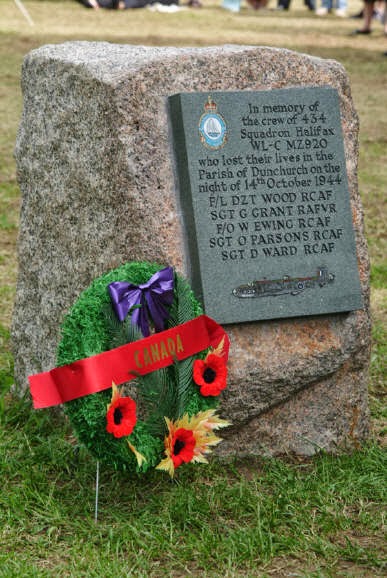
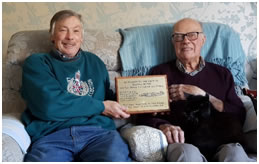
photo by Theo Claassen
In 2017, Roger Higgerson (left) with fellow memorial founder David George when a plaque had been produced, which was later hung in St. Peters Church in Dunchurch as a further reminder of the five brave young men that lost their lives fighting for the UK and Europe to keeps its freedom and defeat Nazi Germany. The placing of the plaque in the church also meant that at the next Remembrance Day service at the Dunchurch War Memorial, the names of the five heroes were read and has been since to keep their memory alive .
Canadian Bomber Crews
The crew of Halifax MZ920 WL-C was made up of a total of seven men, 6 Canadian and 1 British. Halifax crews always had an RAF or RAFVR (Voluntary Reserve) crew member, whereas the Canadian Lancaster squadrons were all crewed by Canadians. This was also the case for Canadian Squadrons using other bombers such as the Wellington.
The reason for this was that Lancasters were built in Canada under license and the RCAF could train Lancaster flight engineers. Since all other bombers used, including the Halifax, were built in the UK, the RCAF could not train flight engineers hence a composite crew.
The history of MZ920

The aircraft was built as a Mk B III by English Electric in Preston in August of 1944 and delivered to 434 Squadron RCAF at RAF Croft in North Yorkshire, registered MZ920 and given the squadron code of WL for 434 Squadron and C as its identity within the squadron. The aircraft was popularly referred to as C for Comet.
It flew with 7 different crews for a total of 79.5 hours on 17 missions.
Date |
Target |
|---|---|
| Wed 6th Sept 1944 | Emden, Germany |
| Sun 10 Sep 1944 | Le Havre, France |
| Mon 11 Sep 1944 | Castrop-Rauxel, Germany |
| Fri 15 Sep 1944 | Kiel |
| Sun 17 Sep 1944 | Boulogne sur Mer, France |
| Mon 18 Sep 1944 | Domburg, Germany (aborted) |
| Mon 18 Sep 1944 | Domburg, Germany (aborted) |
| Wed 20 Sep 1944 | Calais, France |
| Mon 25 Sep 1944 | Calais, France |
| Tue 26 Sep 1944 | Calais, France |
| Wed 27 Sep 1944 | Sterkrade, Germany |
| Thu 28 Sep 1944 | Cap Gris Nez, France |
| Wed 4 Oct 1944 | Bergen, Norway |
| Thu 6 Oct 1944 | Dortmund, Germany |
| Sun 9 Oct 1944 | Bochum, Germany |
| Sat 14 Oct 1944 | Duisburg, Germany |
| Sat 14 Oct 1944 | Duisburg, Germany (crash) |
For more details on Flight Operation and Burial details See:
http://aircrewremembered.com/wood-donald-zachary-taylor.html
----------------------------------------------------
----------------------------------------------------
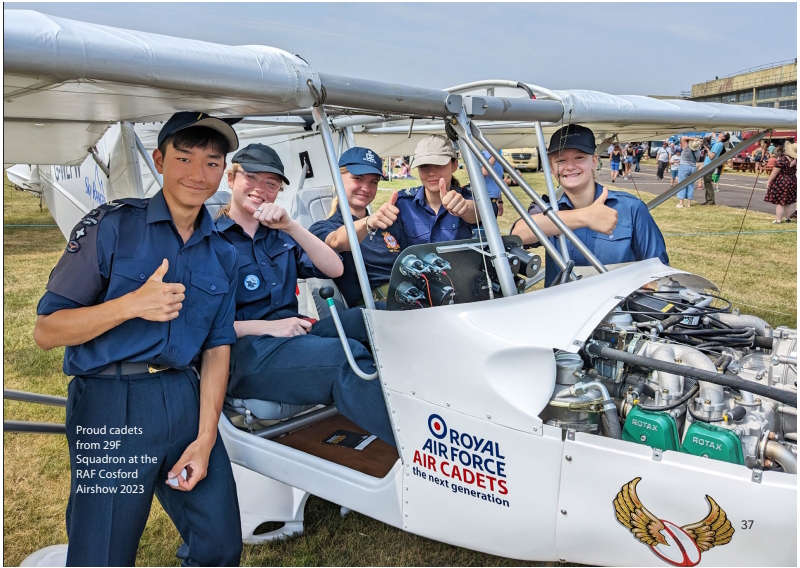
Friends of Dunchurch, a charity formed on 6th September 2018 by like-minded residents who love Dunchurch and its heritage and wish to protect and enhance its environment in order to make the village a better place to live in, work in and visit.
CONTACT US
Email: friendsofdunchurch@gmail.com
Village Green House, The Green, Dunchurch CV22 6NX